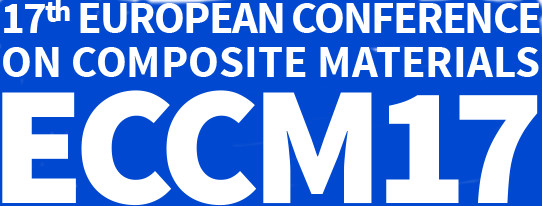

App-Einstellungen:
PRESSING-AND-FOLDING FOR THE PREPARATION OF EFFICIENT AND HIGHLY LOADED 2D MATERIALS-BASED POLYMER NANOCOMPOSITES
Giovanni Santagiuliana (Queen Mary University of London) Olivier T. Picot (Queen Mary University of London) Nicola Pugno (University of Trento) Emiliano Bilotti (Queen Mary University of London) Ton Peijs (Queen Mary University of London)
A new approach for the preparation of 2D materials-based polymer nanocomposites called Pressing & Folding, which allows the blending of materials with very different flow behaviours, differently from traditional techniques combined with static-mixers.
QUANTIFICATION OF INCORPORATION OF CELLULOSE NANOCRYSTALS AND CARBON NANOTUBES IN MELT COMPOUNDED THERMOPLASTICS USING RAMAN IMAGING
Anna E. Lewandowska (University of Exeter) Stephen Eichhorn (University of Exeter)
The contribution presents the advantages of Raman imaging as a complementary method to the conventional analytical techniques used to investigate nanocomposites. Raman imaging delivers broad information about the mixing of fillers and thermoplastics.
SIMULTANEOUSLY TOUGHENED AND ELECTRICALLY CONDUCTIVE EPOXY RESIN FORMULATIONS - THE EFFECT OF TOUGHENER ON THE MECHANICAL AND ELECTRICAL PROPERTIES
Gökhan Bakis (University of Bayreuth) Rico Zeiler (University of Bayreuth) Holger Deutges (University of Bayreuth) Volker Altstädt (University of Bayreuth)
In this research, simultaneously toughened and electrically conductive epoxy composites are produced. Organic tougheners showed enormous effect not only on fracture toughness but as well on electrical conductivity by affecting conducting network.
STUDY OF PHYSICO-CHEMICAL, STRUCTURAL, THERMAL AND IN-VITRO CHARACTERISTICS OF ZINC AND MAGNESIUM SUBSTITUTED NANODIMENSIONAL HYDROXYAPATITE
Seema Kapoor (Panjab University) Uma Batra (PEC University of Technology) Sonia Sharma (Panjab University) Suchita Kohli (Panjab University)
Nanodimensional zinc and magnesium substituted hydroxyapatite powders were synthesized via a sol-gel route. Comprehensive characterization techniques provided experimental evidence of the effects of ion substitution on physicochemical, thermal and bioactive behavior of nanopowders.
THE FRACTURE PERFORMANCE AND PARTICLE DISPERSION OF RUBBER- AND NANOSILICA PARTICLE-MODIFIED EPOXIES
Tasnuva Khaleque (Imperial College London) Soraia Pimenta (Imperial College London) Ambrose C. Taylor (Imperial College London)
The microstructure and fracture performance of an anhydride cured epoxy polymer modified by preformed core-shell rubber particles and nanosilica particles are investigated. A quantitative study of the dispersion of particles is also performed.
THERMAL CONDUCTIVITY AND PROCESSABILITY OF POLYMER COMPOSITES WITH NANO- AND MICRO-FUSIBLE FILLERS
Kazuaki Sanada (Toyama Prefectural University) Ryouta Takeuchi (Toyama Prefectural University) Satoru Kamon (Toyama Prefectural University)
The composites with the nano- and micro-fusible fillers were fabricated and the potential of nano- and micro-fusible fillers to increase the thermal conductivity and decrease the viscosity of the composites was investigated.
TOUGHENING AND MECHANICAL PROPERTIES OF EPOXY MODIFIED WITH BLOCK CO-POLYMERS AND TITANIUM DIOXIDE NANOPARTICLES
Ankur Bajpai (Institute for Composite Materials) Bernd Wetzel (Institute for Composite Materials)
This work focus to overcome the disadvantage of epoxy thermosets i.e. brittleness, and to systematically develop and understand novel polymeric nano composites which include block copolymers with tailored morphology to generate high toughness.
INCREASING THE DAMAGE RESISTANCE OF COMPOSITES BY INTERLEAVING THEM WITH ELECTROSPUN NANOFIBROUS VEILS
Lode Daelemans (Ghent University) Sam van der Heijden (Ghent University) Ives De Baere (UGent, Department of Materials Science and Engineering) Hubert Rahier (Free University Brussels) Wim Van Paepegem (Ghent University) Karen De Clerck (Ghent University)
Interleaving composites with electrospun nanofibrous veils is proving to be a viable technique in order to increase the delamination resistance. We provide a thorough insight into the mechanisms that result in a toughened response.
USE OF CARBON NANOTUBES IN STRUCTURAL COMPOSITES
Nadir Kchit (Nanocyl) Michael Claes (Nanocyl)
Thermoplastics carrier doped carbon nanotubes are used as additives in CFRP with the aim to improve a damage tolerance and electrical conductivity. Two approaches have been proposed; CNT-doped TP converted in veil film and CNT-doped TP in fine powder.
VIBRATIONAL CHARACTERISTICS OF FUNCTIONALLY GRADED CARBON NANOTUBE-REINFORCED COMPOSITE PLATES UNDER UNCERTAINTY
Saleh Pouresmaeeli (Shiraz University) S. Ahmad Fazelzadeh (Shiraz University) Esmaeal Ghavanloo (Shiraz University) A. Fereidoon (Semnan University)
The natural frequency of carbon nanotube-reinforced composite plate under geometrical and mechanical uncertainty is investigated using the interval analysis method. The mechanical properties are predicted on the basis of the modified rule of mixture.
